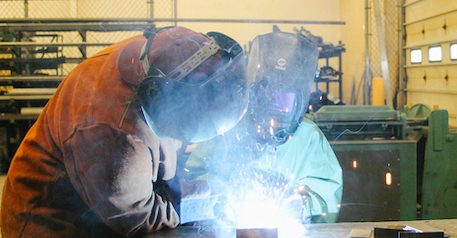How Automation Affects Women’s Work

Technology is rapidly eliminating jobs once held by humans.
We’re increasingly seeing self-check-out kiosks instead of cashiers, transponders replacing toll collectors and factories and manufacturing plants run by robots.
 The trend toward automation will ramp up in the years ahead, as advances in technology and artificial intelligence proceed apace. According to an influential study from Oxford University, 47% of jobs are at high risk of being automated.
The trend toward automation will ramp up in the years ahead, as advances in technology and artificial intelligence proceed apace. According to an influential study from Oxford University, 47% of jobs are at high risk of being automated.
“Jobs most commonly held by women — cashiers, secretaries and bookkeeping clerks, for example — face some of the highest risks of becoming automated in the future,” according to a report from the Institute for Women’s Policy Research. According to the report:
- Though they make up roughly half of the labor force, women constitute 58% of workers at highest risk of losing their jobs to technology.
- Latinas face the highest risk of losing their jobs to automation, with one in three working in high-risk occupations.
- Technological change is threatening clerical and secretarial jobs that can provide pathways to the middle class for many women.
While automation will eliminate many old jobs, it will also create new ones — many of which require training and experience in the STEM fields, where women are vastly under-represented. According to the IWPR report, the high-tech workforce has grown significantly for both women and men, but the number of women workers in these fields grew less than the number of men and the share of women fell.
Preparing women for the challenges posed by automation will entail helping them develop new skills, retraining displaced workers so they can move into other roles, and encouraging more women to pursue roles in high-paying technology fields.
Related
Women and the Gig Economy

The Rise of Telework

Future of Work: Where Will The Job Growth Be?

